Blog
Home » Diamonds blog » A JOURNEY ALONG THE DIAMOND PIPELINE
Focus on

PART 1 OF A 4-PART SERIES
But the rise in value is massive. According to TACY’s carefully watched overview of the chain of the supply in the diamond industry, whereas worldwide sales of rough production at the mining level equaled $14.8 billion in 2016, the value of diamond jewelry at retail stood at $74.3 billion. From rough to polished at retail, the value of the goods rose by a factor of about 5.
To understand how that happens, one needs to take a journey along the diamond pipeline, which is is a figurative pathway along which natural stones travels from where it is extracted from the depths of the earth to the ring upon the finger of a bride. Along that journey – from mine to marketplace – it accumulates value, at rates that generally depend upon what stage of the pipeline the diamond is located.
There essentially are six distinct stages along the diamond pipeline. During the first two loose rough diamonds are involved. The second two involve loose polished diamonds, and third two stages involve diamonds that are set in jewelry.
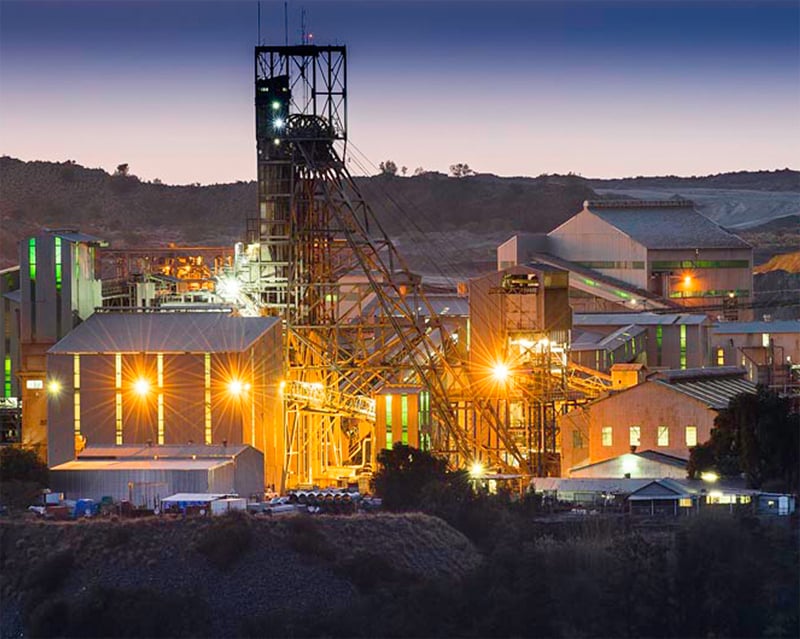
STAGE 1
Exploration and Mining
Natural diamonds were created as far back as 3.3 billion years ago, and were formed as a result of carbon being subject to enormous heat and pressures under the earth’s crusts—at depths of 400 kilometers or even greater.
Mineral prospectors search for these diamonds in volcanic pipes called kimberlites. These are primary deposits, and are mined first in open pits and later underground. Secondary deposits, also referred to as alluvial, are formed as a result of the erosion of material from primary deposits. These stones are mined in riverbeds, and at coastal and undersea locations.
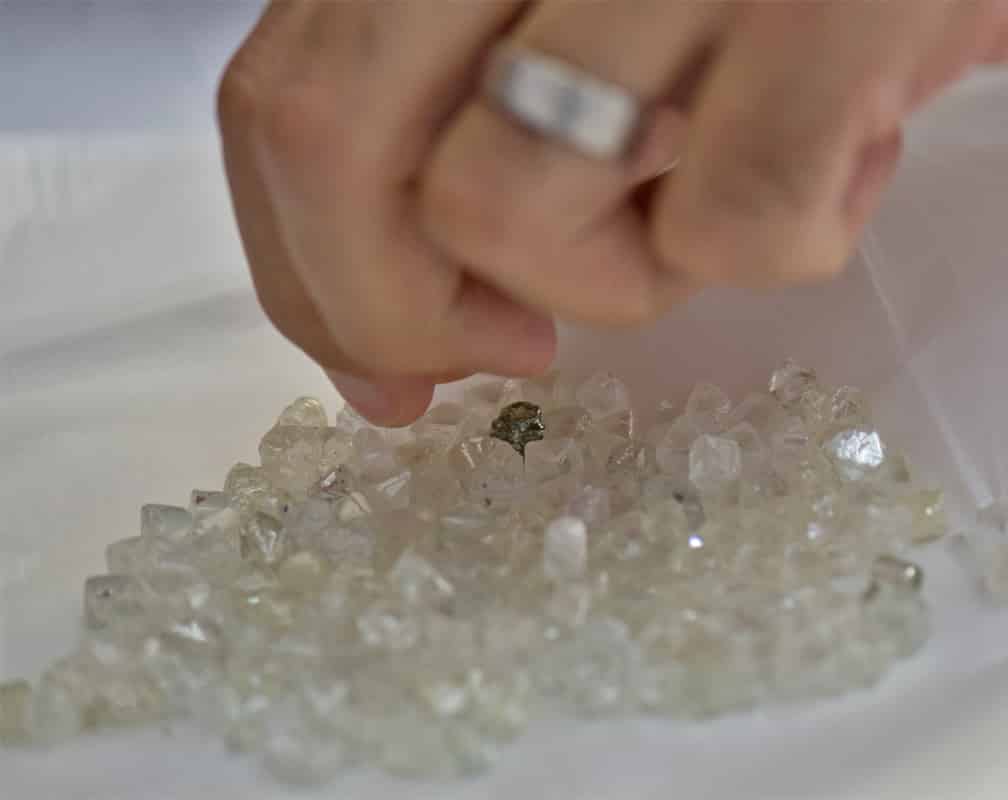
STAGE 2
Rough diamond sales
Rough diamonds are sold by the mining companies in a variety of ways. The larger producers, which control in excess of 80 percent of the market, prefer long term contracts with a relatively limited number of larger manufacturers, although in recent years auctions and tenders have become more popular. Smaller manufacturers typically buy from rough dealers.
Diamonds which are not of gem quality are sold for industrial purposes at this stage, and from a practical perspective exit the diamond pipeline.
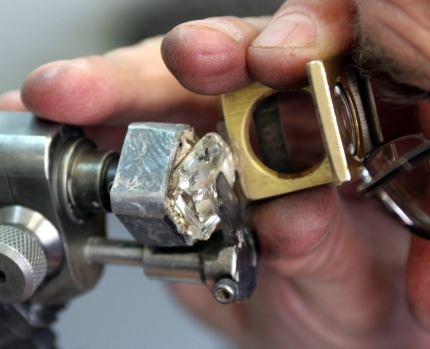
STAGE 3
DIAMOND MANUFACTURING (cutting and polishing)
It is at this stage that rough diamonds are transformed from rough into polished stones. They first may be cleaved or sawn, and then cut to set their circumference. The facets of the stone are created during the polishing process, and it is these that provide the gemstone with its characteristic fire, scintillation and brilliance.
Much of the diamond’s volume is lost during the manufacturing stage. Indeed, according to Bain and Co., only 20 percent of rough volume ends up as polished set in jewelry, although the 80 percent lost includes 40 to 50 percent of the goods that have been sold as industrial.
Nine out of every 10 diamonds are cut and polished in India, but other important polishing centers include China, Israel, Belgium, Russia, South Africa, Botswana, Thailand and the United States.
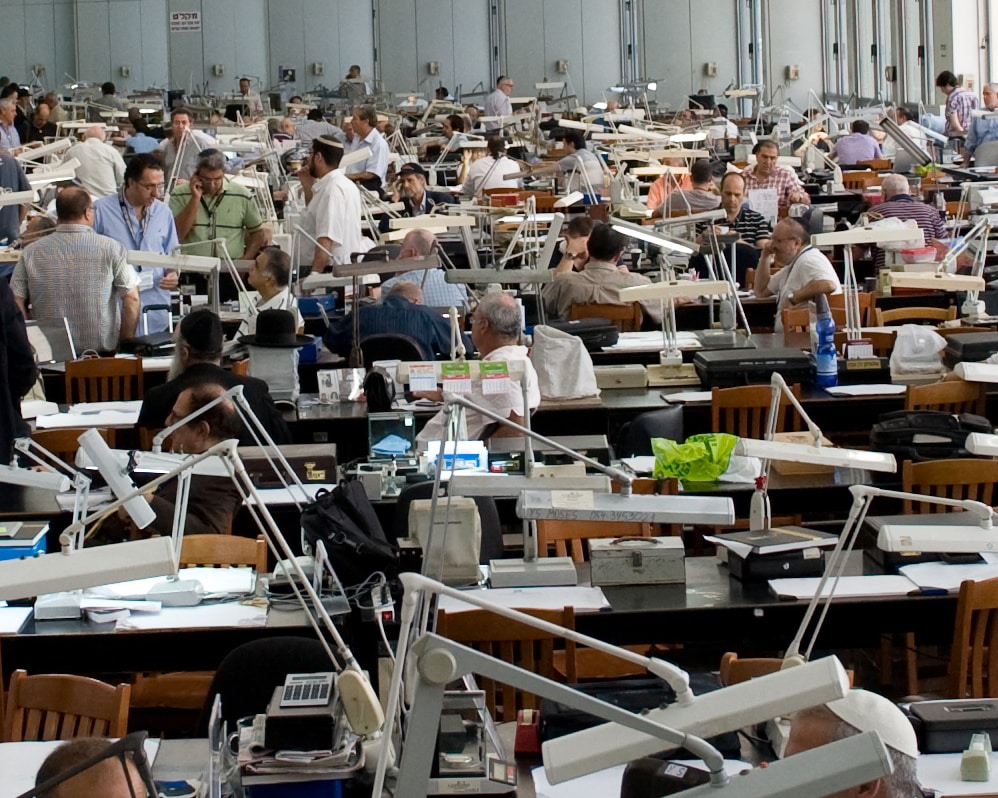
STAGE 4
Loose polished diamond sales
It is at this stage that gem diamonds are traded essentially as a commodity, with prices governed by supply and demand according to the stones’ size and quality.
The bulk of goods are bought and sold at diamond exchanges located in the major trading centers, of which the most prominent are Ramat Gan, Israel; Antwerp, Belgium; New York”>New York, USA; Mumbai, India; Dubai, UAE; and Hong Kong.
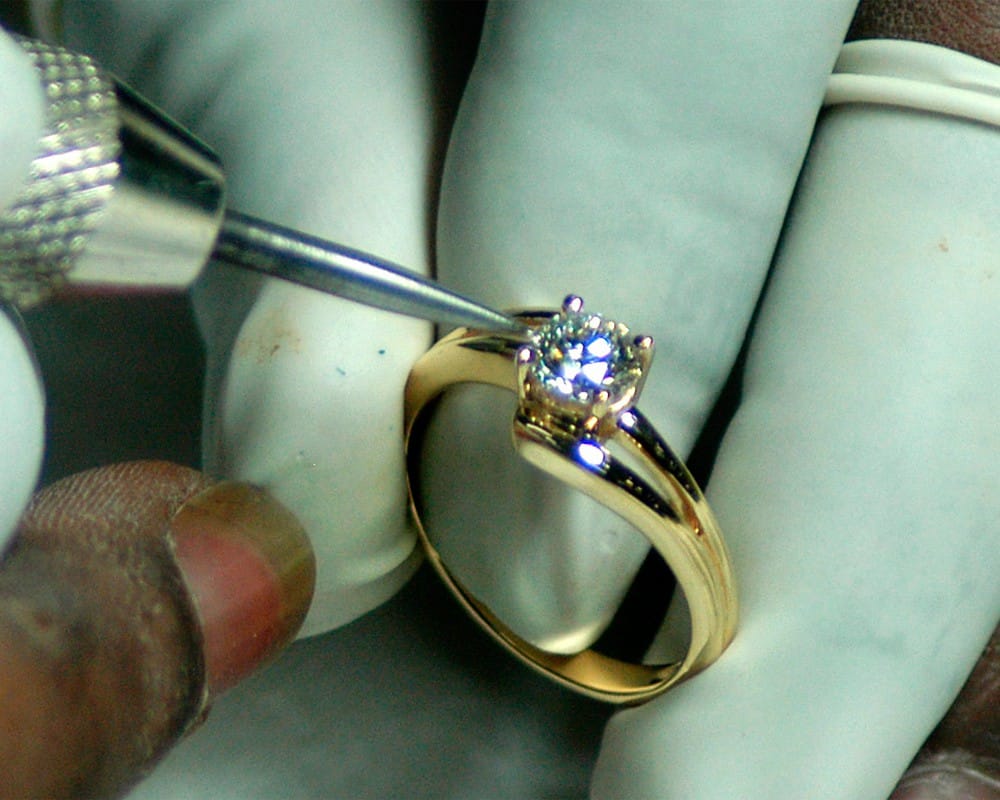
STAGE 5
Diamond jewelry manufacturing
Loose polished diamonds are shipped worldwide, where they are set in jewelry and watches. Diamond setting is labor intensive, and consequently lower-cost products are produced predominantly in countries like India, China and Thailand, whereas high-end jewelry, where the labor component is less significant, is produced also in centers like Italy and France
Added value increases considerably at this stage, although it now includes valuable materials other than diamonds, including precious metals, colored gemstones and pearls.
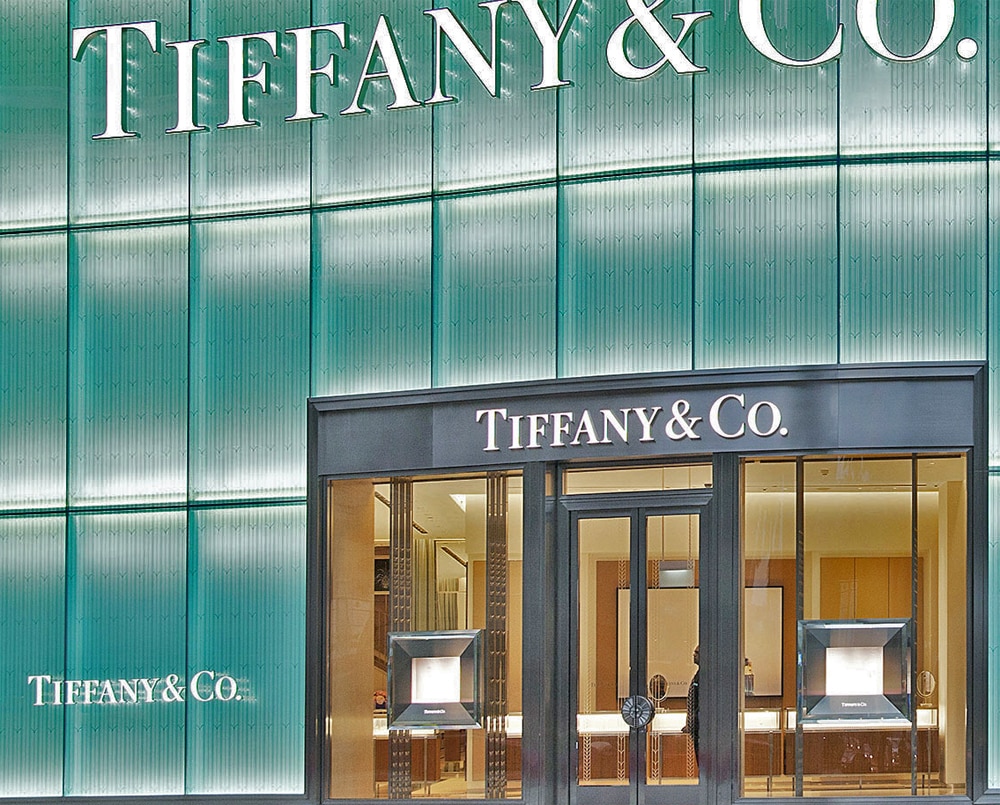
STAGE 6
Diamond jewelry retail
The most important and profitable half-meter of the diamond pipeline, it is said, is the final half-meter, as the diamond set in jewelry makes its way across the sales counter in the jewelry store. The United States remains the world’s most important retail jewelry market by a large margin, followed by China, India, the Persian Gulf, Europe and Japan.
At this stage, marketing and branding are particularly important factors in determining value.
